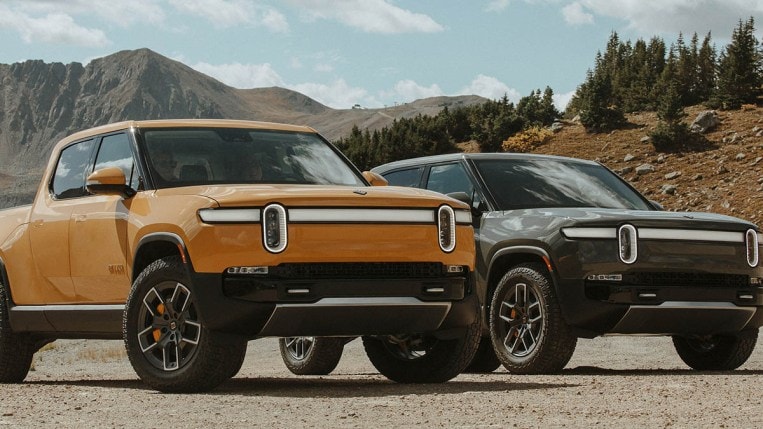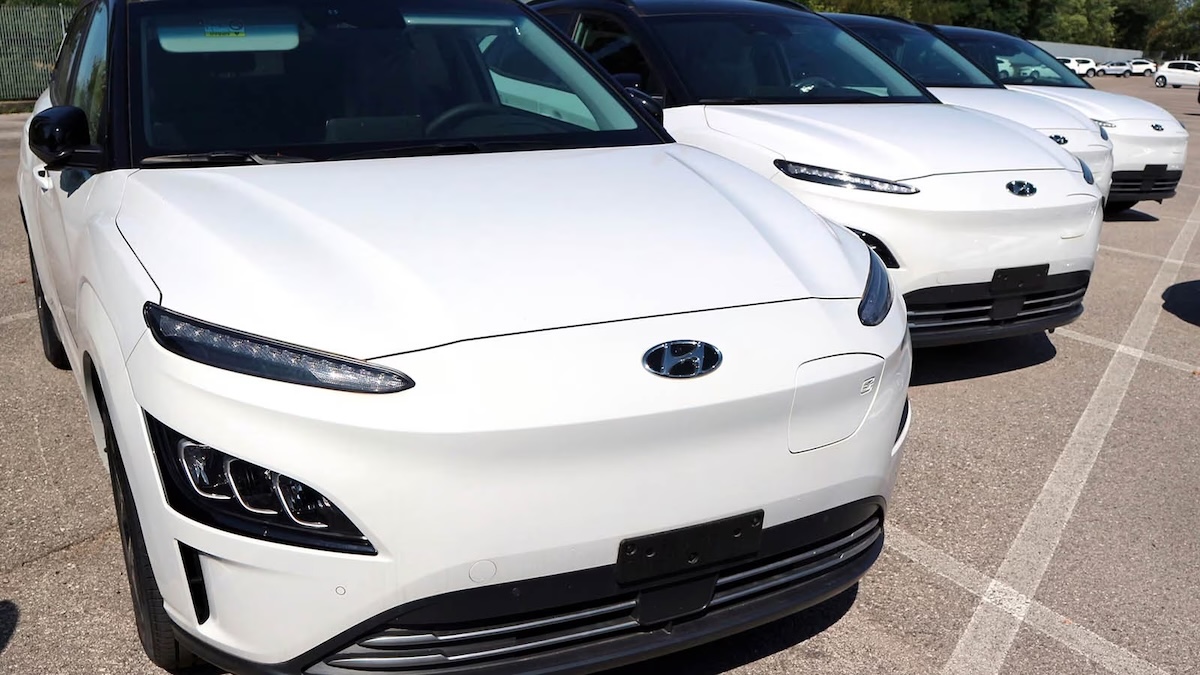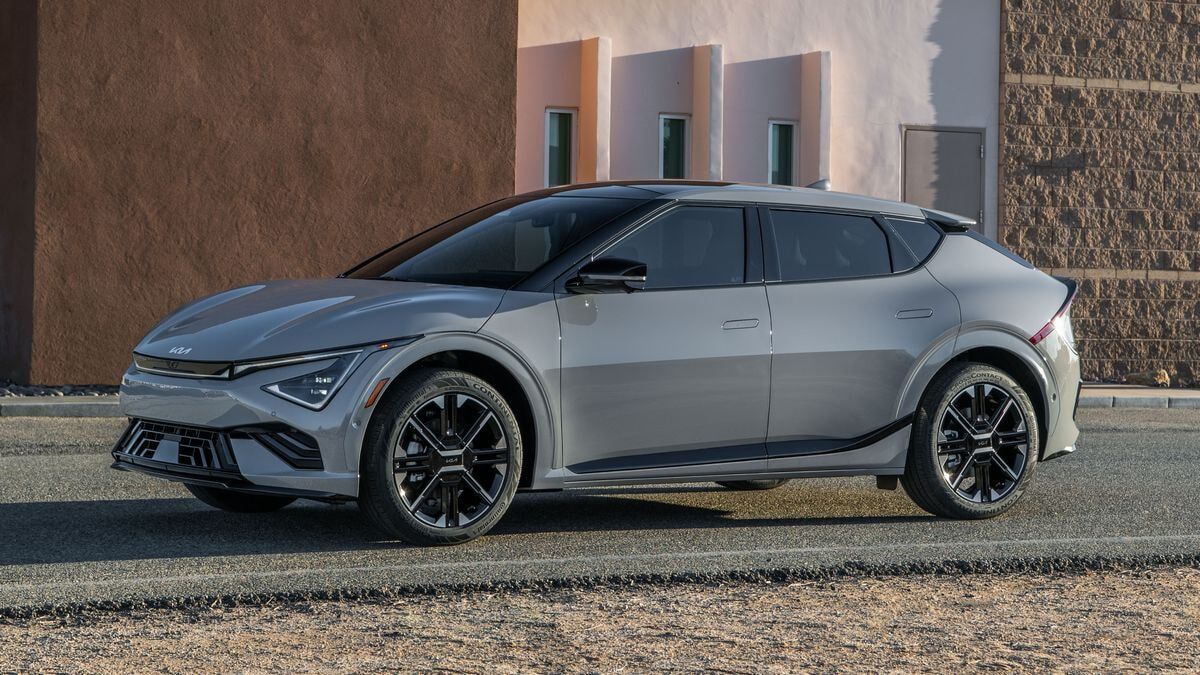Happy Tax Day! To celebrate, the government has removed tax incentives from many new electric vehicles (EVs) and plug-in hybrid electric vehicles (PHEVs).
The date is a coincidence, as near as we can tell.
Just ahead of an April 18 deadline, the Treasury Department announced that electric vehicles from BMW, Hyundai, Nissan, Rivian, Volkswagen, and Volvo would lose access to a $7,500 federal tax credit. Some Ford, Jeep, and Tesla products have seen their tax rebates halved.
Related: How Do Electric Car Tax Credits Work?
Not everyone shopping for an electric car is out of luck. The Chevrolet Bolt EV and EUV retained the full credit, as did the Cadillac Lyriq SUV and Ford F-150 Lightning pickup.
It’s About Trade With China
Congress rewrote the rules governing EV tax credits in a law passed last year. Most of the law took effect on Jan. 1. But, because it takes time for agencies to write the rules on how they’ll carry out a new law, some changes were delayed until now.
The new law, like much legislation, was messy. It was intended as much to shape the auto industry’s future as to help Americans get into electric cars.
The law allows Americans to claim up to $7,500 in federal tax incentives toward the purchase of an EV. But both the buyer and the car must meet certain requirements.
For buyers, there are income caps. The rebates are limited to individuals reporting adjusted gross incomes of $150,000 or less on taxes, $225,000 for those filing as head of household, and $300,000 for joint filers.
For cars, the limitations control where cars and batteries are built and where automakers source some critical battery minerals. Today, most minerals found in EV batteries come from China. Congress hopes to use the rules to change that global trade pattern.
Built in North America, Mined in Partner Countries
Cars must receive final assembly in North America to qualify for any rebate at all. That alone excludes many EVs.
Those built in North America can qualify for half the credit — $3,750 – if at least 50% of battery assembly happens in North America. They qualify for the second half if at least 40% of the minerals used to build the battery were mined in North America or certain trade partners.
Those requirements ladder up over time, eventually requiring almost all battery components to come from American trade allies and almost all battery assembly to happen in North America.
Congress enacted those rules because much of the current EV supply chain originates in China.
Automakers have responded by moving production – in many cases, opening new American factories. But the industry hasn’t been able to remake all of its supply chains quickly enough to meet the mandates.
The List of Qualifying Cars
The list of cars will likely change often for the next several years. Some cars that have lost all or part of their tax credit could regain it as car builders change suppliers.
In some cases, one trim level of a car qualifies for a credit while other trim levels don’t because of where automakers source parts.
| Vehicle | Model Year | Credit Amount |
| Cadillac Lyriq | 2023-2024 | $7,500 |
| Chevrolet Blazer EV | 2024 | $7,500 |
| Chevrolet Bolt EV | 2022-2023 | $7,500 |
| Chevrolet Bolt EUV | 2022-2023 | $7,500 |
| Chevrolet Equinox EV | 2024 | $7,500 |
| Chevrolet Silverado EV | 2024 | $7,500 |
| Chrysler Pacifica PHEV | 2022-2023 | $7,500 |
| Ford E-Transit | 2022-2023 | $3,750 |
| Ford Escape PHEV | 2022-2023 | $3,750 |
| Ford F-150 Lightning | 2022-2023 | $7,500 |
| Ford Mustang Mach-E | 2022-2023 | $3,750 |
| Jeep Grand Cherokee 4xe PHEV | 2022-2023 | $3,750 |
| Jeep Wrangler 4xe PHEV | 2022-2023 | $3,750 |
| Lincoln Aviator Grand Touring | 2022-2023 | $7,500 |
| Lincoln Corsair Grand Touring | 2022-2023 | $3,750 |
| Tesla Model 3 Standard Range | 2022-2023 | $3,750 |
| Tesla Model 3 Performance | 2022-2023 | $7,500 |
| Tesla Model Y | 2022-2023 | $7,500 |








